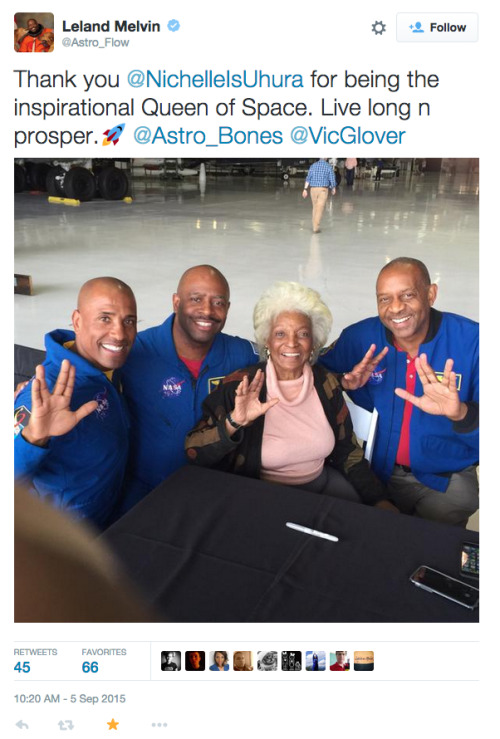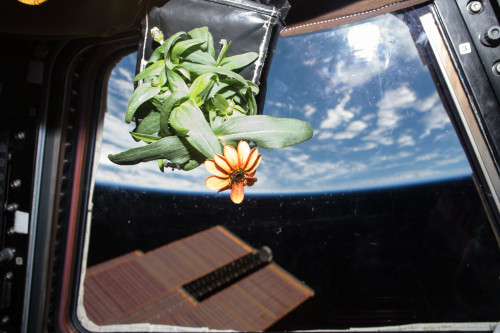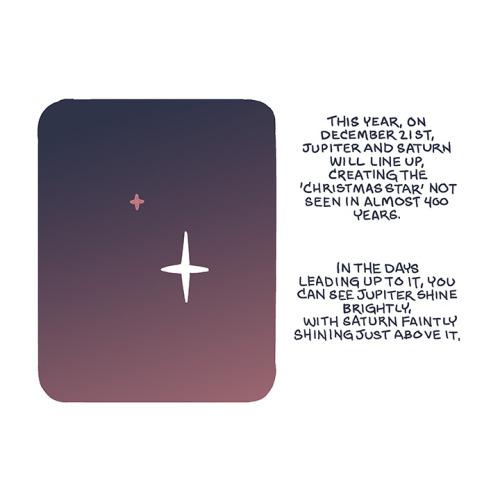Why Star Trek matters.

Why Star Trek matters.
More Posts from Fillthevoid-with-space and Others

Welcome to the second episode!
Below the cut are my sources, music credits, a glossary, a timeline of all the people I mention in the podcast, and the script I was working with. I’m on Twitter @HDandtheVoid if you want to tweet at me instead of tumblr-ing me!
Let me know what you think of this episode, let me know what you think I should research next*, tell me a fun space fact… any feedback is helpful!
*(My current thoughts are henges, spectroscopy dark matter, or black holes. Let me know by April 27th so I can start researching before I put up the next podcast on May 8th!)
Glossary:
astronomy - first used to describe a field of study in the 12th century, it concerns the study of objects and matter outside the earth's atmosphere, as well as their physical and chemical properties
corpuscles - any very small particles. A precursor to atoms.
cosmology—the study of the properties of our universe as a whole.
eccentric orbit - an orbit proposed by Ptolemy’s model of the universe where each planet's circular orbit is not centered on the Earth but at a point slightly away from Earth. See an example in the link.
elliptic orbit - also known as a Kepler orbit, it is an orbital system where a smaller body, like the moon or the planets, orbits a larger body like the Earth or the Sun, with the Earth or Sun at one focus of the ellipse while the other focus is empty. See an example in the link.
epicycle - a planet’s smaller orbit around a point on the larger orbiting sphere it is assigned to. See an example in the link.
Platonic Solid - a regular, 3-dimensional, convex polyhedron constructed by regular polygonal faces with the same number of faces meeting at each vertex. Only five shapes meet these criteria: tetrahedron, cube, octahedron, dodecahedron, and icosahedron. See an example in the link.
precession of the equinoxes - also called axial precession, it is a slow and continuous change in the orientation of an astronomical body's rotational axis due to gravity. On Earth, it is seen as a westward movement of the equinoxes along the ecliptic relative to the fixed stars, opposite to the yearly motion of the Sun along the ecliptic. See an example in the link.
solar system - first used in 1704, this term describes the Sun together with the group of celestial bodies that are held by its attraction and orbit around it.
Wilkinson Microwave Anisotropy Probe—a spacecraft operating from 2001 to 2010 which measured temperature differences in the cosmic microwave background radiation leftover from the Big Bang.
Script/Transcript (It’s not exactly what I said, but it’s what I was going off of. It’s conversational and it’s less rambly than what I actually said)
Timeline of people mentioned:
Claudius Ptolemy, Greek (100-170) Al-Hasan Ibn al-Haytham, Arab (965-1040) Nicolaus Copernicus, Polish (1473-1543) Tycho Brahe, Danish (1541-1601) Giordano Bruno, Italian (1548-1600) Galileo Galilei, Italian (1564-1642) Johannes Kepler, German (1571-1630) René Descartes, French (1596-1650) Sir Isaac Newton, English (1642-1726/7) Edmond Halley, English (1656-1742) Immanuel Kant, German (1724-1804) Pierre-Simon, marquis de Laplace, French (1749-1827) William Huggins, English (1824-1910) Heber Curtis, American (1872-1942) V. M. Slipher, American (1875-1969) Albert Einstein, German (1879-1955) Harlow Shapley, American (1885-1972) Edwin Hubble, American (1889-1953)
Sources:
Mars in retrograde during Tycho’s time
History of the idea of black holes
Size of the universe since 1919, presented as a teacher resource
Timeline of cosmological models
Current cosmological model
Measuring the size of our universe via NASA, with links to further universe-size resources
19th-century size of our universe debate between Shapley and Curtis
Cosmological Constant via NASA
Cosmological Constant via HubbleSite
NASA’s breakdown of the makeup of our universe
Dark Energy via NASA
Kirshner, Robert P. “Hubble’s Diagram and Cosmic Expansion.” In Proceedings of the National Academy of Sciences of the United States of America 101.1 (Jan. 6, 2004), 8-13. http://www.jstor.org/stable/3148363 [accessed 2 December 2013].
McLennan, Evan. Cosmological Evolution: Critical and Constructive. 2nd ed., Gazette-Times Press: Corvallis, OR, 1916.
Pickover, Clifford A. Archimedes to Hawking: Laws of Science and the Great Minds Behind Them. Oxford UP: NY, 2008.
Sabra, A. I. “Configuring the Universe: Aporetic, Problem Solving, and Kinemaic Modeling as Themes of Arabic Astronomy.” In Perspectives on Science 6 (1998), 288-330. Retrieved from http://www.mitpressjournals.org/loi/posc [accessed Oct. 4, 2013].
Shank, Michael H. “Setting the Stage: Galileo in Tuscany, Veneto, and Rome.” In The Church and Galileo, 57-87. Edited by Ernan McMullin. Notre Dame, IN: U of Notre Dame P, 2005.
Sharratt, Michael. Galileo: Decisive Innovator. New York: Cambridge U P, 1994.
Smith, R. W. “The Origins of the Velocity-Distance Relation.” In Journal for the History of Astronomy 10.29 (Oct 1979), 133-165.
Westfall, Richard S. Essays on the Trial of Galileo. Vatican City: Vatican Observatory Foundation, 1989.
…and class notes from a class on Ancient Astronomy I took with Prof. James Evans.
Intro Music: ‘Better Times Will Come’ by No Luck Club off their album Prosperity
Filler Music: ‘Epigram’ by Tycho off their album Dive
Outro Music: ‘Fields of Russia’ by Mutefish off their album On Draught

Spacewalk complete and new astronaut record set! Shane Kimbrough and Peggy Whitson of NASA successfully reconnected cables and electrical connections on an adapter-3 that will provide the pressurized interface between the station and the second of two international docking adapters to be delivered to the complex to support the dockings of U.S. commercial crew spacecraft in the future. The duo were also tasked with installing four thermal protection shields on the Tranquility module of the International Space Station.
Having completed her eighth spacewalk, Whitson now holds the record for the most spacewalks and accumulated time spacewalking by a female astronaut. Spacewalkers have now spent a total of 1,243 hours and 42 minutes outside the station during 199 spacewalks in support of assembly and maintenance of the orbiting laboratory.
Astronaut Thomas Pesquet of ESA posted this image and wrote, ’ Shane and Peggy on their way to their first #spacewalk tasks.’
Credit: ESA/NASA



Take a moment, look outside your window. 🌷🌼
Today is the #FirstDayOfSpring in the Northern Hemisphere, also known as the vernal equinox.
#DYK Earth’s tilted axis causes the season? Throughout the year, different parts of Earth receive the Sun’s most direct rays. So, when the North Pole tilts toward the Sun, it’s summer in the Northern Hemisphere. And when the South Pole tilts toward the Sun, it’s winter in the Northern Hemisphere.
These images are of Zinnias. They are part of the flowering crop experiment that began aboard the International Space Station on Nov. 16, 2015, when NASA astronaut Kjell Lindgren activated the Veggie system and its rooting “pillows” containing zinnia seeds.
Make sure to follow us on Tumblr for your regular dose of space: http://nasa.tumblr.com.

In the ancient world (and, honestly, today too) there’s nothing spookier than the sky doing something weird. Auroras, meteors, comets, and eclipses all fell under the category of scary, prophetic bad omens, but don’t worry! In this podcast I explain what they are! There are also some opportunities to see these astronomical events in action coming up. The annual Perseid meteor shower reaches its peak August 11-13 and there will be a total eclipse of the Sun (or a partial eclipse, depending where you’re viewing it from) across North America on August 21, 2017.
Below the cut are sources, music credits, vocabulary list, and the transcript of this episode. Check out the glossary, it’s a big one! There are also some cool eclipse-viewing resources I’ll highlight so you can view this phenomenon safely.
Let me know what you think I should research by messaging me here, tweeting at me at @HDandtheVoid, or asking me to my face if you know me in real life. And please check out the podcast on iTunes, rate it or review it if you’d like, subscribe, and maybe tell your friends about it if you think they’d like to listen!
(My thoughts on the next episode were spectroscopy, probes through the ages, and the transit of Venus. Let me know by the 2nd and I’ll have the next podcast up on August 14th, barring any delays due to trip fatigue!)
Glossary
auroras - a light display that occurs when a magnetosphere is sufficiently disturbed by solar wind that charged particles scatter into the upper atmosphere and lose their energy.
comet - a small, icy body that orbits the Sun. When its orbit takes it close to the Sun, the comet warms up and releases gases and debris that produce a visible atmosphere, sometimes called the comet’s tail.
corona - the hot outer atmosphere of the Sun.
eclipse - when three celestial bodies line up so that one obstructs the visibility of the other two. A solar eclipse can be partial (only part of the Sun is obscured by the Moon), total (all of the Sun is hidden by the Moon), or annular ( the Moon is close to Earth and appears too small to completely cover the Sun completely).
Exeligmos cycle - a cycle that is 3 times the saros cycle, or 669 months. It is more accurate means of predicting eclipses and additionally predicts eclipses that will be visible from a location close to the initial eclipse.
Inex cycle - a cycle of 28 years and 345 days long used to predict an eclipse that’s visible in the opposite hemisphere. For example, if an eclipse happens in the Northern hemisphere, one Inex cycle later there will be an eclipse visible in the Southern hemisphere. The Inex cycle does not ensure that both kinds of eclipses will be of the same type.
meteor - a small rocky or metallic body in space, smaller than asteroids. Contact with the Earth’s atmosphere causes a meteor to burn up in a streak of light. Many meteors entering the atmosphere within a few minutes of each other is called a meteor shower. If a meteor impacts on Earth’s surface without burning up, it is then classified as a meteorite.
penumbra - a region where only a portion of the light source is obscured. When the light source is completely blocked, this darkest part of a shadow is called the umbra.
perihelion - an object’s closest approach to the Sun in its orbit. Its greatest distance from the Sun is called its aphelion.
perigee - a satellite’s closest approach to the Earth in its orbit. Its greatest distance from Earth is called its apogee.
radiant - the point in the sky where objects appear to come from. For example, the Perseid meteor shower appears to come from the constellation Perseus.
Saros cycle - a cycle of 223 months that is used to predict eclipses.
solar prominence - a large, bright feature anchored to the Sun's surface and extend outwards into the Sun's corona. A prominence forms in about a day out of plasma, a hot gas made of electrically charged hydrogen and helium. Stable prominences may last for several months, looping hundreds of thousands of miles into space as plasma flows along a structure of the Sun’s magnetic field that has burst outward, releasing the plasma.
syzygy - the straight-line alignment of three celestial bodies.
Script/Transcript
Sources
Perseids via EarthSky
Perseids via NASA
Meteor showers and viewing tips via StarDate
Comet Swift-Tuttle via NASA
My local library’s information and recommended reading list for learning about eclipses. Love you, Multnomah County!
Map of the Path of Totality across the United States
Solar eclipse map and calendar via the Exploratorium website
Free eclipse glasses at libraries via Lunar and Planetary Institute
Guide to making a pinhole camera to view the eclipse via NASA
Historical eclipses via NASA
Historical eclipses via Astronomy Magazine
“Even if the Moon, however, does sometimes cover the Sun entirely, the eclipse does not have duration or extension; but a kind of light is visible about the rim which keeps the shadow from being profound and absolute.”
Solar prominence via NASA
Solar flares via NASA
Fred Espenak’s guide to eclipses. He’s a former NASA astrophysicist who’s credited with all the eclipse predictions so I trust him.
Some good but confusing charts on solar eclipse Saros cycles via NASA
“Van den Bergh placed all 8,000 solar eclipses in von Oppolzer's Canon der Finsternisse (1887) into a large two-dimensional matrix. Each Saros series was arranged as a separate column containing every eclipse in chronological order. The individual Saros columns were then staggered so that the horizontal rows each corresponded to different Inex series.”
A Danish webpage on calculating eclipses
Hawks, Ellison. The Boy’s Book of Astronomy. Frederick A. Stokes Co: New York, 1914. Located in Google Books preview. (Heads up, this is a fairly racist source.)
Richard Cohen. Chasing the Sun. Random House: NY, 2010.
Robert A. Henning: “different forms, wavering, many colours diffusing and changing, sometimes far away, sometimes filling the heavens around and above, plunging great dropping spears and sheets of colour earthward towards your very head as though a great hand were dropping colour like burning oil” (43).
Ernest W. Hawkes: “whistling, crackling noise” (44).
Jeremy Belknap: “like running one’s thumb and forefinger down a silk scarf” (44).
Intro Music: ‘Better Times Will Come’ by No Luck Club off their album Prosperity
Filler Music: ‘Eclippse’ by Radical Face off his album Sunn Moonn Eclippse. Check out the video in the album link, it’s amazing.
Outro Music: ‘Fields of Russia’ by Mutefish off their album On Draught
Here’s the nose scratching sponge I talked about in Episode 19!

This is how astronauts clear our ears (and scratch our noses!) during a spacewalk.










Cassini prepares for final orbital “Grand Finale” at Saturn.
Erik Wernquist, the same filmmaker who created 2014’s “Wanderers” and a stunning New Horizons promotional film in 2015, has created a new video highlighting NASA’s Cassini mission’s final days at Saturn. The Cassini spacecraft will begin its final series of orbits to cap a 13-year groundbreaking science mission known as the Grand Finale. For the first time ever in Cassini’s time at Saturn, the spacecraft will fly in between the planet’s rings and atmosphere. No spacecraft has ever before flown in this region of any of the solar system’s ringed planets. After 20 orbits, Cassini will dive into Saturn’s upper atmosphere September 15 where it will be destroyed. In 2008, mission managers explored a range of End of Mission scenarios that would protect Saturn’s moon’s from Earthly contaminants before ultimately deciding on atmospheric reentry. Cassini began her End of Mission manoeuvres on November 26, 2016, when it began the first of 20 ring-grazing orbits. A close flyby of Titan April 22 will alter the spacecraft’s trajectory to begin the first of 23 orbits in the Grand Finale, which will begin April 26.

Cassini launched from Earth on October 20, 1997, and entered Saturn orbit July 1, 2004. 16 days later, the European-built Huygens probe attached to the spacecraft landed on Titan, becoming the first probe to land in the outer solar system. Originally scheduled for a four-year mission ending in 2008, Cassini received two mission extensions in 2008 and 2010, with the latter ending in 2017. With the spacecraft’s fuel reserves low, the Cassini team decided to end the mission. P/C: JPL/Erik Wernquist



Description: A four panel comic. In the first two panels, me and my father are squinting at the night sky before I brighten and declare that ‘OH! I see it!’ In the next panel is the night sky with two stars. One bright one in the lower right center and a slightly dimmer one just above and to the left of the first one. Text reads: ‘This year, on December 21st, Jupiter and Saturn will line up, creating the ‘Christmas Star’ not seen for almost 400 years. In the days leading up to it, you can see Jupiter shine brightly, with Saturn faintly shining just above it.’ In the final panel I am closing my window and looking up at the sky. Captions read: ‘I keep looking up, finding and refinding it.’ And ‘The planets are always there, but this moment makes it all seem so fleeting.’
Voyager is so happy, because it’s the bravest satellite of all. It has gone the furthest. And it’s not lonely, because it’s talking to us. It phones home. And it tells us all about the wonderful things that it’s seeing. …There’s a whole universe to explore, and it’s just leaving our Solar System right now. It’s very brave and very lucky to be doing what it’s doing, so it’s not going to get lost. It’s traveled further than anything we’ve ever built has traveled before. It’s actually showing us the way. … It might have been safer for it to just stay home, and stay inside a building, but then it would have been sad forever, because it never would have done its purpose. It never would have discovered things. It’s all a wonderful story of great discovery and success, and it couldn’t have happened if Voyager hadn’t been brave… It’s not really the fact that everything always has a start and an end, it’s what happens in the middle that counts. What do you while you’re alive? What do you do while you’re laughing? And I think we’re doing exactly what makes Voyager joyful and as happy as it could be. Think about the fact that you’re a little bit like Voyager. In that you’re going to go see the world, and you’re going to call your mom on the phone and tell her about the wonderful things that you see. … You wouldn’t want to spend your whole life hiding under your bed and never seeing anything in your whole life, you want to be able to do what makes you happy and joyful and learn about things to discover. You might be the person that discovers something really important for everybody else on the world, but you can never discover that if you just hide and only do things that are safe. So think about yourself a little bit like Voyager. What makes you laugh? It’s not just staying, hiding underneath your bed safely at home.
Cmdr. Chris Hadfield, reassuring a five-year-old who was worried about the Voyager satellite (source)
oh no I’m having feelings about a satellite
tagging Doctor Who, because.
(via reconditarmonia)
-
 aquameme reblogged this · 1 month ago
aquameme reblogged this · 1 month ago -
 flappielxx123 liked this · 1 month ago
flappielxx123 liked this · 1 month ago -
 female-nipple-presenting reblogged this · 1 month ago
female-nipple-presenting reblogged this · 1 month ago -
 littlelionprinceling reblogged this · 1 month ago
littlelionprinceling reblogged this · 1 month ago -
 free-the-fandom liked this · 3 months ago
free-the-fandom liked this · 3 months ago -
 bigbromelvin reblogged this · 4 months ago
bigbromelvin reblogged this · 4 months ago -
 bigbromelvin liked this · 4 months ago
bigbromelvin liked this · 4 months ago -
 67-427-eleanor liked this · 5 months ago
67-427-eleanor liked this · 5 months ago -
 bearhug77 liked this · 5 months ago
bearhug77 liked this · 5 months ago -
 blacktone72 liked this · 5 months ago
blacktone72 liked this · 5 months ago -
 tigermanpaw liked this · 5 months ago
tigermanpaw liked this · 5 months ago -
 hammels liked this · 5 months ago
hammels liked this · 5 months ago -
 ausetkmt reblogged this · 5 months ago
ausetkmt reblogged this · 5 months ago -
 blessthosewhocurseyou liked this · 7 months ago
blessthosewhocurseyou liked this · 7 months ago -
 spooky-queer-over-here reblogged this · 8 months ago
spooky-queer-over-here reblogged this · 8 months ago -
 doodleboarder24 reblogged this · 8 months ago
doodleboarder24 reblogged this · 8 months ago -
 doodleboarder24 liked this · 8 months ago
doodleboarder24 liked this · 8 months ago -
 sseanettles reblogged this · 8 months ago
sseanettles reblogged this · 8 months ago -
 fluffelhighwind liked this · 8 months ago
fluffelhighwind liked this · 8 months ago -
 parvinives reblogged this · 1 year ago
parvinives reblogged this · 1 year ago -
 hazelthewolfo reblogged this · 1 year ago
hazelthewolfo reblogged this · 1 year ago -
 hazelthewolfo liked this · 1 year ago
hazelthewolfo liked this · 1 year ago -
 curly-fangirly liked this · 1 year ago
curly-fangirly liked this · 1 year ago -
 2cute2pootxo liked this · 1 year ago
2cute2pootxo liked this · 1 year ago -
 outweigh-the-needs-of-the-few6 reblogged this · 1 year ago
outweigh-the-needs-of-the-few6 reblogged this · 1 year ago -
 polarbearcult liked this · 1 year ago
polarbearcult liked this · 1 year ago -
 spacecowboydoctor reblogged this · 1 year ago
spacecowboydoctor reblogged this · 1 year ago -
 plusleandminuntherats reblogged this · 1 year ago
plusleandminuntherats reblogged this · 1 year ago -
 consultingcinnamon liked this · 1 year ago
consultingcinnamon liked this · 1 year ago -
 nicole-swift-tumbler liked this · 1 year ago
nicole-swift-tumbler liked this · 1 year ago -
 zuttie-deactivated-2022 liked this · 1 year ago
zuttie-deactivated-2022 liked this · 1 year ago -
 idttcf liked this · 1 year ago
idttcf liked this · 1 year ago -
 popomakom liked this · 1 year ago
popomakom liked this · 1 year ago -
 woodenpizza123 liked this · 1 year ago
woodenpizza123 liked this · 1 year ago -
 mr-pronouns liked this · 1 year ago
mr-pronouns liked this · 1 year ago -
 cor-tauri liked this · 1 year ago
cor-tauri liked this · 1 year ago -
 rainbows-are-my-style reblogged this · 1 year ago
rainbows-are-my-style reblogged this · 1 year ago -
 rainbowpinjacket liked this · 1 year ago
rainbowpinjacket liked this · 1 year ago -
 im-just-a-big-fan reblogged this · 2 years ago
im-just-a-big-fan reblogged this · 2 years ago -
 really-royal-raven liked this · 2 years ago
really-royal-raven liked this · 2 years ago -
 cherribombart liked this · 2 years ago
cherribombart liked this · 2 years ago -
 kaylinalexanderbooks liked this · 2 years ago
kaylinalexanderbooks liked this · 2 years ago
A podcast project to fill the space in my heart and my time that used to be filled with academic research. In 2018, that space gets filled with... MORE SPACE! Cheerfully researched, painstakingly edited, informal as hell, definitely worth everyone's time.
243 posts
![The Science Of Interstellar - Black Hole [YouTube Video]](https://64.media.tumblr.com/a1cf99c4f65fd1eae0d88d0485c9f109/tumblr_nfogd8kIyF1qb6kd0o1_250.gif)
![The Science Of Interstellar - Black Hole [YouTube Video]](https://64.media.tumblr.com/e1f24da4d0364bc2ca8dbb2c0bdfea28/tumblr_nfogd8kIyF1qb6kd0o3_250.gif)
![The Science Of Interstellar - Black Hole [YouTube Video]](https://64.media.tumblr.com/821ab338f5c9fd5c61cc1af57318cbaf/tumblr_nfogd8kIyF1qb6kd0o4_250.gif)
![The Science Of Interstellar - Black Hole [YouTube Video]](https://64.media.tumblr.com/f40b0668bb5fc168df25afc88b7bdfe5/tumblr_nfogd8kIyF1qb6kd0o5_250.gif)
![The Science Of Interstellar - Black Hole [YouTube Video]](https://64.media.tumblr.com/04b808634cb4e90392903fc5c65e1d79/tumblr_nfogd8kIyF1qb6kd0o6_250.gif)
![The Science Of Interstellar - Black Hole [YouTube Video]](https://64.media.tumblr.com/b45ee46e319ac5ffc37f82f071b2dac3/tumblr_nfogd8kIyF1qb6kd0o2_250.gif)
